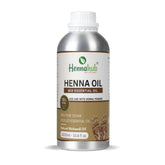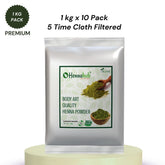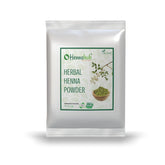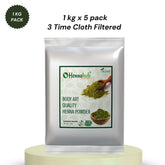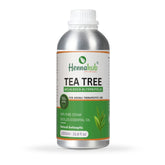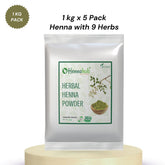Henna Body Art Ideas for Your Next Festival or Wedding
Henna Body Art Ideas for Your Next Festival or Wedding
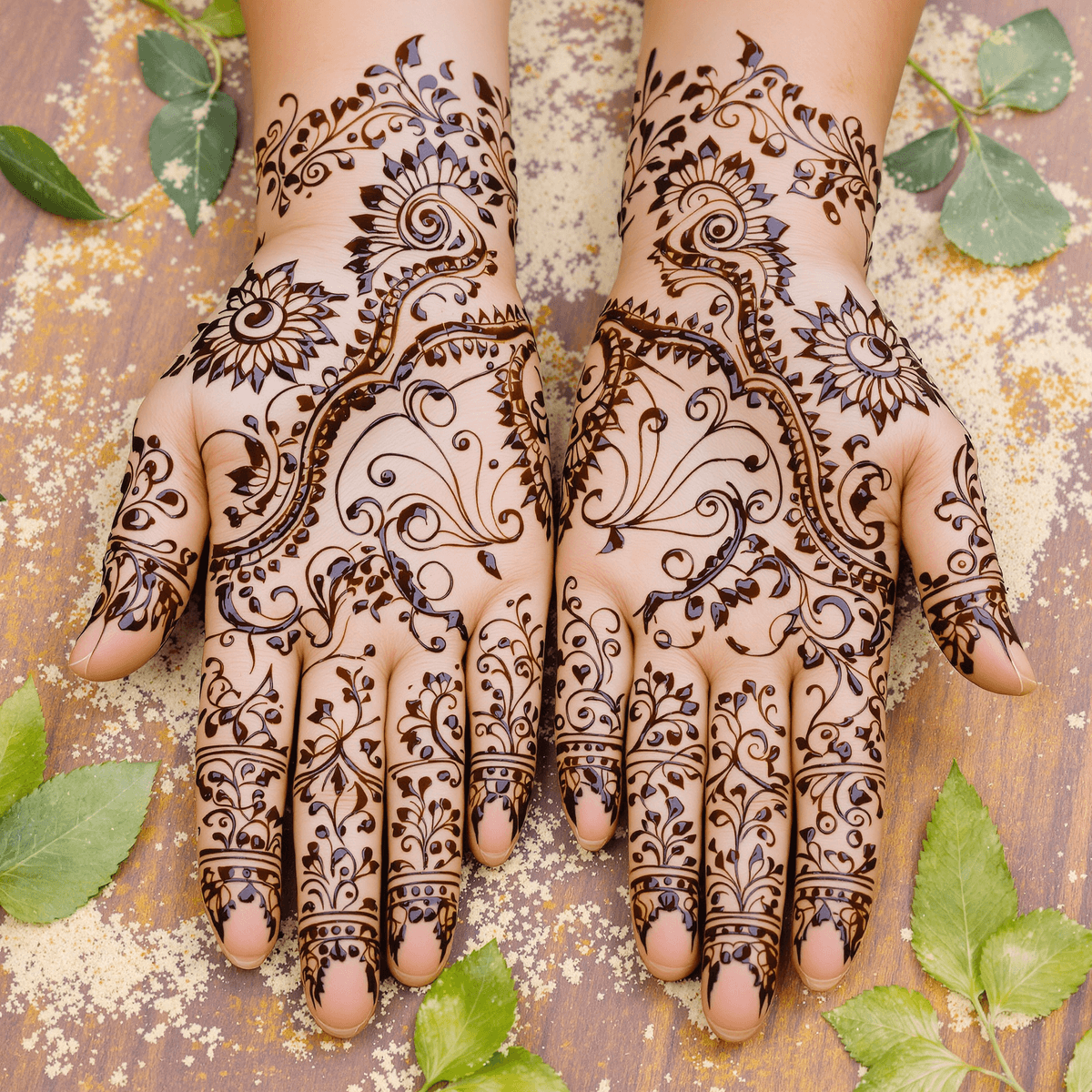
Henna body art, also known as mehndi, transforms your skin into a canvas of intricate designs using natural plant-based dye. This ancient art form dates back thousands of years, deeply rooted in the cultural traditions of South Asia, the Middle East, and North Africa.
At weddings, the application of henna symbolizes blessings, protection, and good fortune for the bride. During festivals, these temporary decorations serve as a form of personal expression and celebration, adorning hands, feet, and other body parts with stunning patterns.
The allure of henna has captured hearts worldwide, with Western countries embracing this temporary body art for:
- Music festivals
- Special occasions
- Personal expression
- Cultural celebrations
Ready to explore the world of henna? We'll guide you through stunning design ideas - from traditional bridal patterns to contemporary festival styles. You'll discover the perfect henna powder types, application techniques, and placement options to create your own meaningful body art masterpiece.
Understanding Henna Quality and Types of Henna Powder
The secret to stunning henna designs lies in selecting the right powder quality. High-quality henna powder creates rich, deep stains that can last 2-3 weeks, while inferior products might fade within days.
Body Art Quality Henna Characteristics:
- Triple-sifted for ultimate smoothness
- Fresh, earthy aroma
- Deep green color
- Free from additives and chemicals
- Lab-tested for purity
Superfine henna powder stands out for intricate designs. Its ultra-fine texture allows the paste to flow smoothly through application cones, creating hair-thin lines and delicate details impossible with coarser powders.
Bridal Henna Powder Specifics:
- Higher lawsone content (2-3%)
- Gentle on sensitive skin
- Premium sifting process
- Rich burgundy stain development
- Extended staying power
Rajasthani henna powder holds a special place in the world of body art. Harvested from India's Rajasthan region, these leaves undergo traditional processing methods passed down through generations:
- Hand-picked at optimal maturity
- Sun-dried naturally
- Stone-ground to preserve potency
- Small-batch processing
- Strict quality control
You'll recognize quality Rajasthani henna by its:
- Fine, silky texture
- Uniform dark green color
- Strong natural fragrance
- Quick dye release
- Consistent staining properties
The powder's quality directly impacts your design's success. Professional artists recommend testing new powders on a small skin area 48 hours before major applications, ensuring both safety and satisfaction with the stain color.
In exploring different types of henna, it's interesting to note that there are various kinds of henna with specific characteristics and uses as highlighted in this comprehensive guide on the six types of henna.
Popular Henna Design Styles for Festivals and Weddings
Each henna design style has its own unique features, making it suitable for specific occasions and personal preferences.
1. Arabic Henna Designs
- Bold, flowing lines create striking visual impact
- Large floral patterns with negative space
- Quick application time - ideal for festivals
- Signature vine-like patterns wrap around fingers
- Perfect for beginners due to simpler execution
2. Indian Bridal Mehndi
- Intricate details covering entire hands and feet
- Traditional elements include:
- Peacocks symbolizing beauty
- Lotus flowers representing purity
- Hidden groom's initials within patterns
- Detailed paisleys and mandalas
- Dense coverage creates darker stains
- Takes 4-6 hours for full bridal application
3. Moroccan Geometric Patterns
- Straight lines and angular shapes
- Repeating diamond patterns
- Symmetrical designs on both hands
- Works beautifully on:
- Wrists and forearms
- Ankles and feet
- Back of hands
- Popular for cultural festivals and celebrations
4. African-Inspired Tribal Motifs
- Nature-based elements like:
- Leaves and vines
- Sun and moon symbols
- Animal silhouettes
- Bold, graphic patterns
- Minimal detail work
- Strong cultural significance
- Striking appearance for festival wear
These distinct styles can be mixed and matched to create unique, personalized designs. Many modern artists blend elements from different traditions to develop contemporary interpretations while respecting cultural origins.
Creative Henna Body Art Ideas for Your Next Festival or Wedding
Transform your festival or wedding experience with these distinctive henna body art ideas that blend tradition with contemporary flair.
Classic Hand Designs with a Twist
- Create asymmetrical patterns across both palms for a modern interpretation
- Incorporate negative space within traditional designs to add depth
- Mix delicate finger lace patterns with bold palm centerpieces
- Add crystal accents around your henna design for festival sparkle
Beyond Traditional Placements
- Wrap intricate vines around your forearm, connecting to a statement shoulder piece
- Design a decorative back piece featuring mandala centerpieces
- Create henna sleeves with graduated patterns from wrist to shoulder
- Place delicate ankle designs that extend up the calf
Meaningful Symbolic Elements
- Weave lotus flowers into your design to represent purity and new beginnings
- Include peacock motifs for prosperity and grace
- Add small hearts or infinity symbols for eternal love
- Incorporate personalized elements like important dates or initials
Fusion Designs
- Blend Arabic floral patterns with Indian geometric borders
- Mix Moroccan tessellations with tribal dot work
- Combine traditional paisleys with modern minimalist lines
- Layer different cultural patterns to create unique depth and dimension
Festival-Specific Ideas
- Create temporary henna crowns with metallic embellishments
- Design matching friend tattoos using simplified traditional motifs
- Add UV-reactive paint highlights to your henna design for night events
- Incorporate festival-themed elements like music notes or celestial symbols
Your henna design can reflect both personal style and cultural appreciation. These placement options and design elements serve as starting points for your unique body art creation.
Application Techniques and Tools for Perfect Henna Art
Creating stunning henna designs requires mastery of specific application tools and techniques. Here's what you need to know about the essential tools and methods:
Traditional Application Tools
- Henna Cones: Pre-filled or handmade paper cones offer precise control for detailed work
- Metal-tipped Bottles: Ideal for covering larger areas quickly
- Fine-tipped Brushes: Best for delicate line work and filling small spaces
Step-by-Step Paste Preparation
- Sift your henna powder to remove any lumps
- Mix with lemon juice until reaching a thick yogurt consistency
- Add essential oils (eucalyptus or lavender) for deeper stains
- Let the mixture rest for 12 hours to release dye
Application Tips for Perfect Results
- Hold your application tool at a 45-degree angle
- Apply consistent pressure for uniform lines
- Start from the center of your design, working outward
- Keep the paste at room temperature for smooth flow
Common Application Mistakes to Avoid
- Applying paste too thick or too thin
- Moving too quickly between design elements
- Touching wet henna before it's fully dried
- Using low-quality application tools
Temperature and Drying Considerations
- Apply henna in a warm environment (70-80°F)
- Allow designs to dry naturally for 4-6 hours
- Avoid using heat tools to speed up drying
- Keep the dried paste on as long as possible for darker stains
Cultural Significance and Respectful Use of Henna Art
Henna body art carries deep cultural meaning across various traditions. The art form serves as a sacred practice in many South Asian, Middle Eastern, and North African communities, particularly during weddings and religious celebrations.
Sacred Symbols and Their Meanings:
- Peacock designs represent beauty and grace in Indian culture
- Lotus flowers symbolize spiritual awakening
- Geometric patterns in Moroccan henna reflect protection and blessings
When adopting henna designs from different cultures, respect and understanding are essential. Certain patterns hold specific religious or ceremonial significance - bridal designs, in particular, should be approached with cultural awareness. For instance, exploring various henna design styles can provide insight into their meanings.
Guidelines for Respectful Henna Use:
- Research the cultural origins of your chosen design
- Avoid using sacred symbols without understanding their meaning
- Consult experienced henna artists from the specific cultural background
- Consider simpler, non-ceremonial designs for festival wear
The practice of henna art connects generations through shared traditions and celebrations. By honoring these cultural elements, you help preserve the authenticity and spiritual significance of this ancient art form. Understanding the symbols and patterns associated with henna can further enhance your appreciation for this beautiful art form.
Alternatives and Modern Variations of Henna Body Art
The world of temporary body art has expanded beyond traditional henna designs. White henna has emerged as a striking alternative, creating ethereal patterns that pop against any skin tone. This body paint variant uses non-toxic ingredients like body adhesive and white acrylic paint to achieve its distinctive look.
Popular modern alternatives include:
- Jagua gel - A natural blue-black dye from the Genipa Americana fruit
- Metallic temporary tattoos - Shimmering designs inspired by traditional henna patterns
- Body paint pens - Quick-drying options for festival-ready designs
- Glitter henna - Traditional designs enhanced with sparkly elements
These alternatives offer unique advantages:
- Shorter drying time
- Immediate color visibility
- Waterproof options
- Custom color choices
Many artists now blend traditional henna patterns with these modern materials, creating hybrid designs that honor ancient traditions while embracing contemporary aesthetics. These innovations make temporary body art accessible for quick festival applications or special events where traditional henna might not be practical.
FAQs (Frequently Asked Questions)
What is henna body art and why is it significant in festivals and weddings?
Henna body art, also known as mehndi, is a temporary skin decoration using natural henna paste to create intricate designs. It holds cultural significance in many festivals and weddings as a symbol of joy, beauty, and auspiciousness, often marking special occasions with meaningful patterns.
How do I choose the best henna powder for vibrant and long-lasting body art?
Selecting high-quality henna powder is essential for vibrant and long-lasting stains. Superfine henna powders offer smooth texture ideal for detailed designs, while bridal henna powders are formulated for safety on sensitive skin and rich pigmentation perfect for weddings. The best Rajasthani henna powder is renowned for its purity and traditional processing methods, making it a top choice.
What are the popular henna design styles suitable for festivals and weddings?
Popular henna design styles include Arabic designs characterized by bold lines and floral curves, Indian mehndi patterns featuring intricate motifs like paisleys and mandalas with symbolic elements such as the groom’s name, Moroccan geometric patterns suited for hand and body art during cultural festivals, and tribal motifs inspired by African nature themes that add unique flair to festival appearances.
Can henna body art be applied beyond traditional hand designs?
Yes, creative henna body art ideas extend beyond classic palms and fingers to innovative placements like arms, shoulders, and back for striking festival statement pieces. Incorporating symbolic elements meaningful to weddings such as peacocks or lotus flowers enhances the design's significance. Combining traditional styles with modern twists like fusion of Arabic and Indian motifs also offers fresh artistic expressions.
What are the recommended application techniques and tools for perfect henna art?
Traditional application tools include cones and brushes; cones allow precise control ideal for detailed work, while brushes can cover larger areas smoothly. The process involves preparing quality henna paste from fine powders followed by careful application using steady hands to achieve clean lines and intricate patterns essential for beautiful results.
How can I respectfully use henna art considering its cultural significance?
Understanding the cultural context before adopting specific bridal or tribal designs is crucial to respectful use of henna art. Recognizing its traditional meanings helps avoid cultural appropriation. Additionally, exploring modern variations like white 'henna'—a body paint alternative—can provide creative options while honoring original customs.

